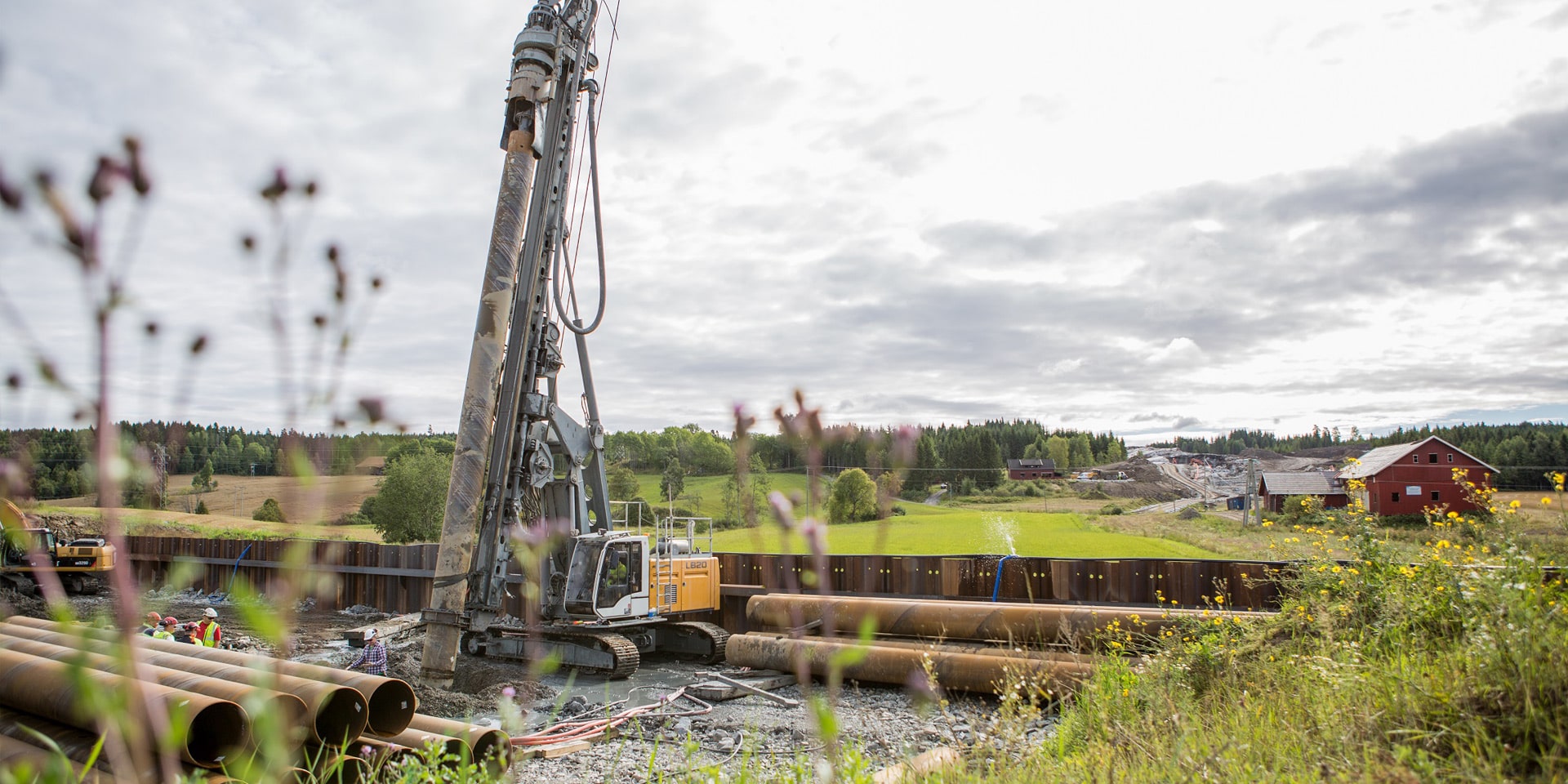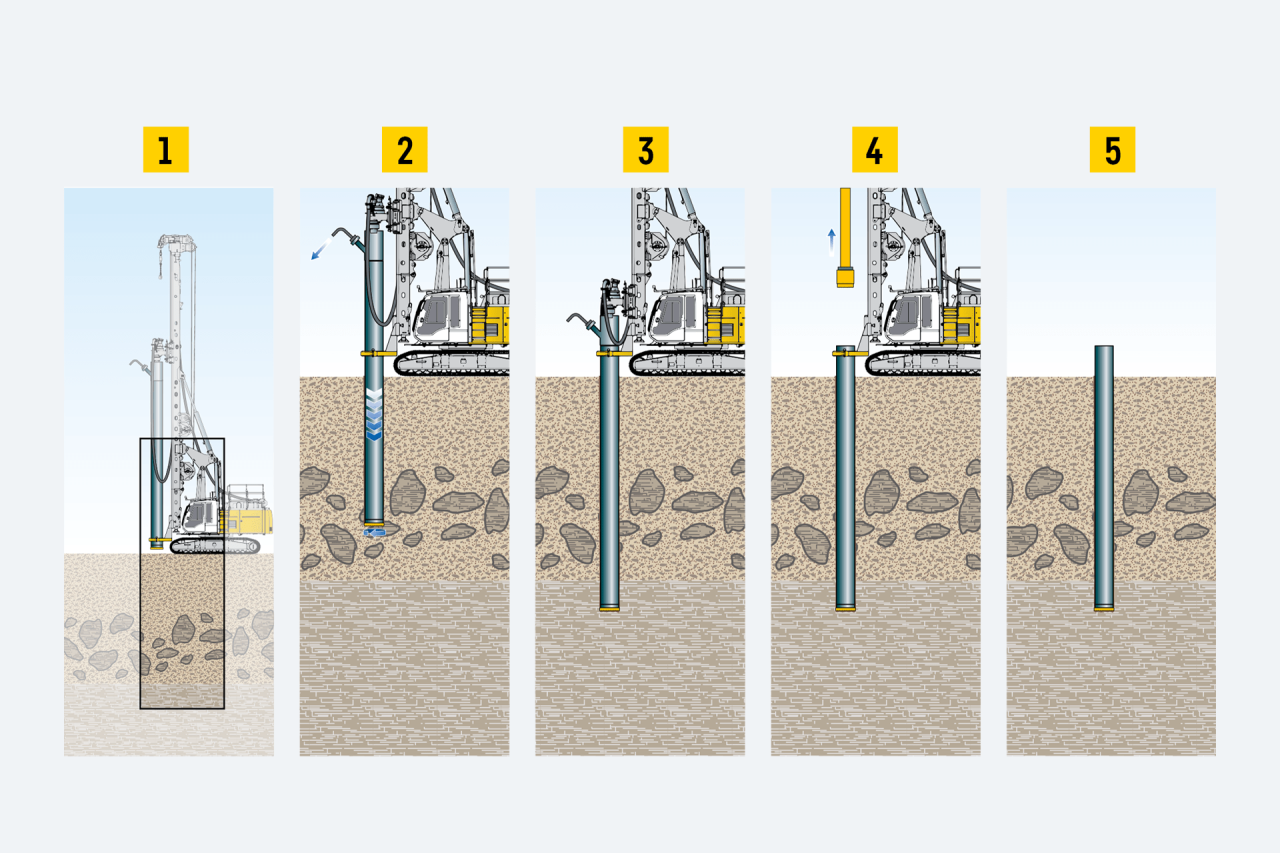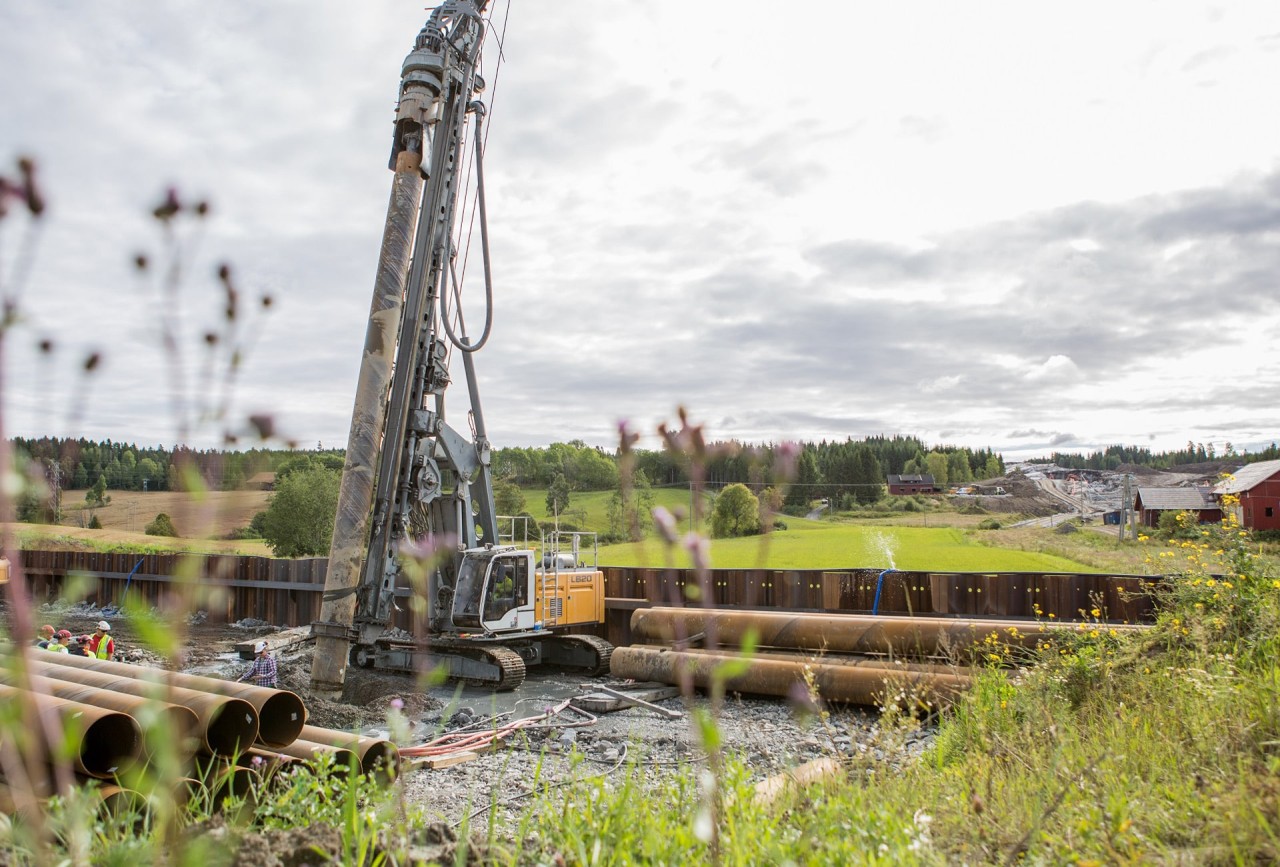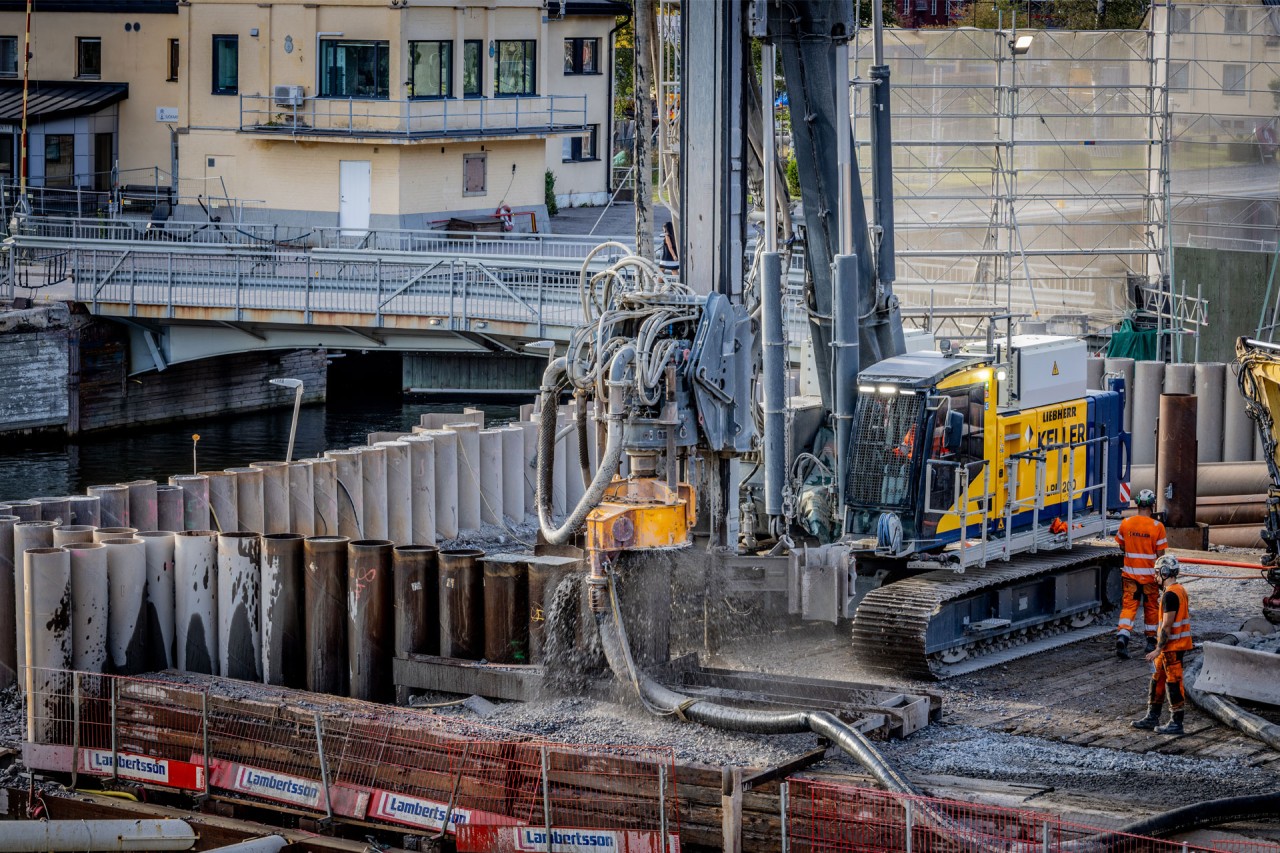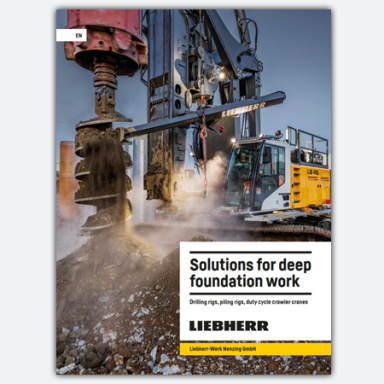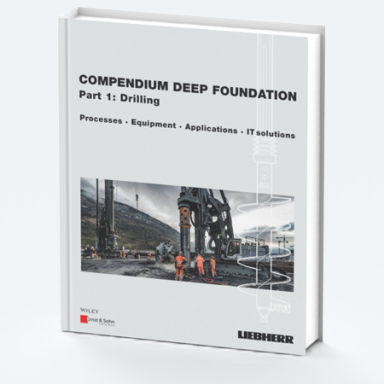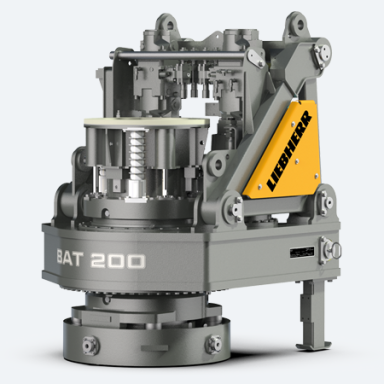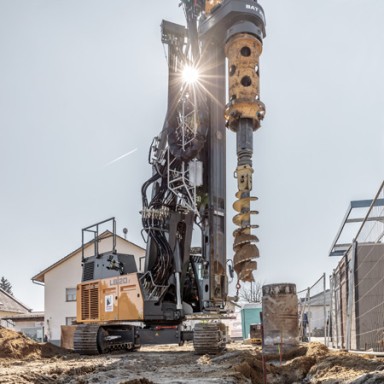DTH hammer drilling
In down-the-hole drilling a drill rod is fitted with a hammer at its lower end. The hammer, which is mounted on the drill bit, is activated through the addition of compressed air and driven into the ground – simultaneously rotating and impacting. A flushing current collects the loosened drill cuttings and conveys them upwards. This method is mainly applied for hard to very hard rock and/or for penetrating large boulders.
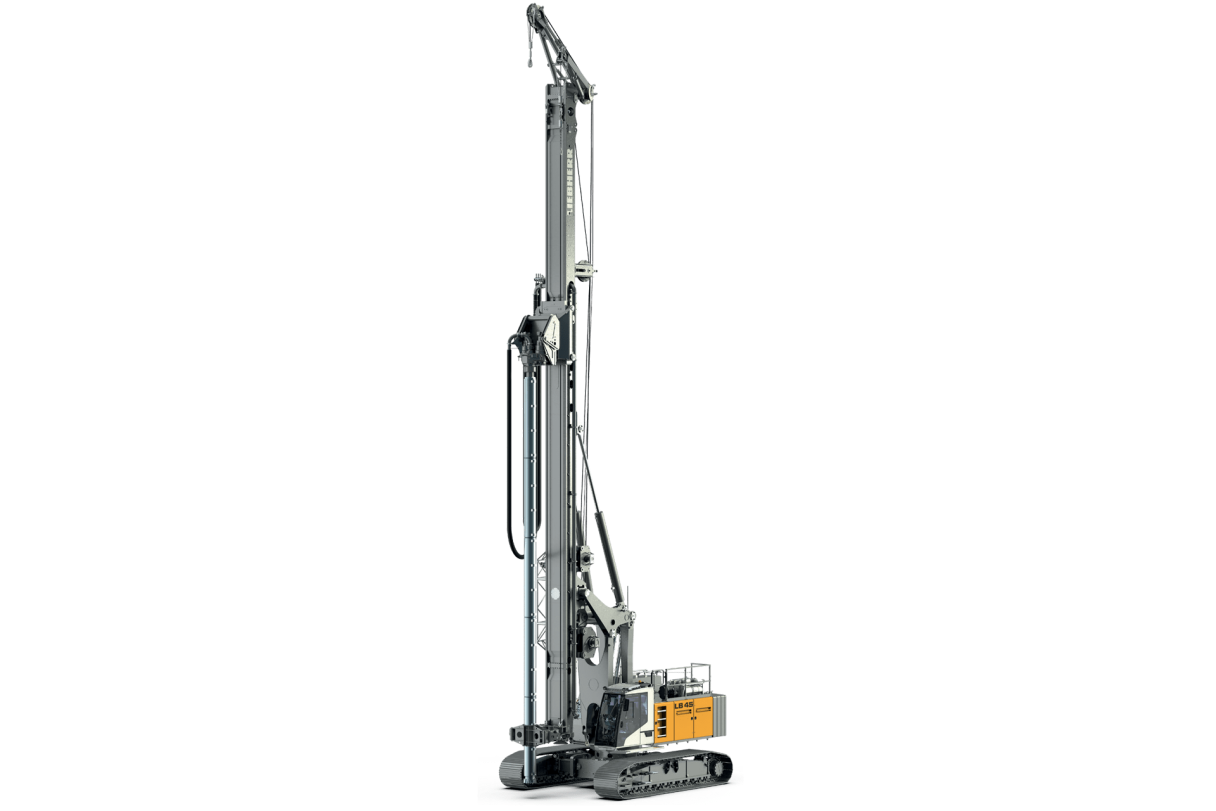
Video: Down-the-hole drilling
The video shows the down-the-hole drilling method for very hard soil or rock.
Video: LB 16 unplugged DTH drilling
Machines
Results 1-6 of 11
1
2

